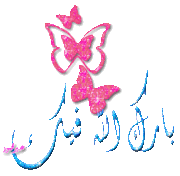It's always great to see the views of non-native speakers of Arabic, concerning the Arabic language, especially the learning of it.
Posted by Tony Rogers Culture Monday, January 25th, 2010
Arabic, a language that has passed the test of time, remains one of the oldest and most unique languages in the world.
According to Ethnologue, almost 600 million people speak the language. Most native English speakers consider it a language with a foreign alphabet and unrecognizable speech patterns. However, those that take Arabic at BSU know it as a beautiful, flowing language that offers a glimpse into the past.
“It’s an amazing language to learn. It’s beautiful when spoken and written and I promise you will feel a sense of extreme accomplishment when you start to understand,” Ashley Hislop, a junior history and anthropology major, said. ”The Arabic world has a vibrant history and is once again becoming a player on the world stage. Learning the Arabic language will help you better understand this exciting culture.”
The only known survivor of the old north Arabian dialect group, Arabic is thought to have emerged around the third century A.D. Arabic was the language used by Mohammed, and has since been used as the liturgical language of Islam.
Many Arab regions have their own dialect. Each dialect is vastly different and unintelligible to people of other regions. However, most schools of higher learning, including Boise State, teach Standard Arabic — the official form of the language. According to Tony Lara, president of the Arabic Club, Arabic is not only spoken in the Middle East.
“I think that Arabic is unique in that it’s not restricted to only a certain part of the world. Because of its religious connection, it transcends international borders,” Lara said.
Hislop enjoys the diversity of Arabic.
“Personally, I love the Arabic language, the culture, the history, the art. For me, learning Arabic is practical,” Hislop said. “I intend to work in the Middle East and northern Africa, so knowing Arabic is necessary. But for the everyday student, learning Arabic could just be a fun, great way to fulfill those pesky language requirements.”
Although for many that take the class, the sheer beauty of the language captivates students.
“The written language is absolutely gorgeous,” Hislop said. “We had a calligrapher come to class one day and it was amazing how beautiful the words looked. English calligraphy looks beautiful but it has nothing on Arabic calligraphy.”
Despite the beauty of the script, Arabic remains one of the hardest languages for English speakers to learn. It ranks a category three (hardest) on the language difficulty scale, as defined by the U.S. State Department.
“It can seem easy at first but it can get a little tricky the further you go into it,” Lara said. “Luckily we have a fantastic teacher who takes a real interest in his students and does all he can to help them succeed.”
Adjunct instructor Isam Ali engages his classes in not only the language, but culture, architecture and art.
“I like everything about Arabic. The way the letters are written, the flow of the spoken language and the fact it has (grammar) rules that actually work,” Ali said.
A potential benefit of learning Arabic to the students at Boise State can come in the form of an increased appreciation for cultural diversity.
“Simply from a student diversity standpoint I think students at Boise State could benefit from learning a little more Arabic. It’s true that as you learn more about a language you ultimately gain a better understanding of the culture that surrounds it and we can all benefit from a little more understanding,” Lara said.
------------end
Source: http://arbiteronline.com/2010/01/25/arabic-a-language-of-beauty-prestige/














